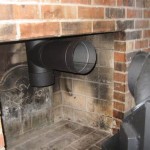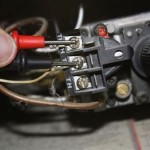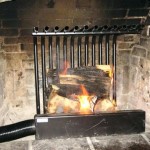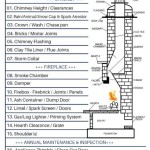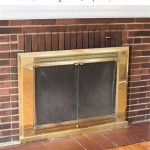Are Electric Fireplace Heaters Expensive to Run? A Detailed Analysis
Electric fireplace heaters have grown in popularity as a convenient and aesthetically pleasing alternative to traditional wood-burning fireplaces. They offer supplemental heat, visual appeal, and ease of installation, eliminating the need for chimneys or gas lines. However, a key concern for potential buyers is the operational cost. Understanding the factors that influence the energy consumption of electric fireplace heaters is crucial to determining whether they are expensive to run.
The cost of operating an electric fireplace heater depends on several variables, including the heater's wattage, the local electricity rate, and the frequency of use. A comprehensive assessment requires considering each of these factors and their interplay.
Wattage and Heat Output: The Core of Energy Consumption
The wattage of an electric fireplace heater is the primary determinant of its energy consumption. Wattage measures the rate at which the heater consumes electricity. Most electric fireplace heaters have a wattage range of 1000 to 1500 watts on their high setting. Lower settings typically reduce the wattage and, consequently, the heat output.
To calculate the energy consumption, one must convert watts to kilowatts (kW) by dividing the wattage by 1000. For example, a 1500-watt heater consumes 1.5 kW of electricity per hour when operated at its highest setting. This figure is essential for calculating the operational cost.
The heat output, measured in British Thermal Units (BTUs), is directly related to the wattage. A higher wattage generally translates to a higher BTU output, meaning the heater can warm a larger space more effectively. However, it also means higher energy consumption. It is important to match the heater's BTU output to the size of the room to be heated. An excessively powerful heater for a small room will waste energy, while an underpowered heater will struggle to maintain a comfortable temperature.
Many electric fireplaces offer multiple heat settings. Using a lower heat setting not only reduces the BTU output but also significantly lowers the wattage consumed. This can be a strategic way to minimize energy costs while still providing supplemental heat. The thermostat functionality also plays a role. By setting a desired temperature, the heater cycles on and off to maintain that temperature, preventing continuous operation at maximum wattage.
The efficiency of an electric fireplace heater is typically very high, close to 100%. This means that nearly all the electricity consumed is converted into heat. Unlike gas fireplaces, there is no energy lost through venting. However, this doesn't necessarily translate to lower overall heating costs compared to other heating methods. While efficient in converting electricity to heat, the cost of electricity can still make them expensive to run depending on local rates and usage habits.
Electricity Rates: A Variable Cost Factor
Electricity rates vary significantly depending on geographic location, time of year, and energy provider. Rates are typically measured in cents per kilowatt-hour (kWh). To determine the operational cost of an electric fireplace heater, one must know the local electricity rate.
To calculate the cost of running the heater per hour, multiply the heater's kilowatt consumption (as calculated earlier) by the electricity rate. For example, if the electricity rate is $0.15 per kWh, and the heater consumes 1.5 kW, the hourly cost is 1.5 kW x $0.15/kWh = $0.225, or 22.5 cents per hour.
Electricity rates can fluctuate throughout the day, especially with time-of-use pricing plans. These plans offer lower rates during off-peak hours (typically evenings and weekends) and higher rates during peak hours (typically daytime). Using the electric fireplace heater during off-peak hours can significantly reduce the operational cost. Analyzing electricity bills and understanding the rate structure is crucial for making informed decisions about heater usage.
Some areas offer renewable energy options or community choice aggregation programs, which can influence electricity rates. While renewable energy sources are often more environmentally friendly, they may also affect the cost per kWh. Consumers should research these options and compare rates to conventional electricity sources.
It is beneficial to compare the cost of electric heating with other heating methods. Gas furnaces, for example, may have lower operating costs in areas with low natural gas prices. However, the installation costs and maintenance requirements of gas furnaces are often higher than those of electric fireplace heaters. It’s important to also consider the effectiveness of each specific unit.
Usage Patterns and Supplemental Heating: Key Considerations
The frequency and duration of use significantly impact the overall cost of running an electric fireplace heater. Using the heater for extended periods, especially at high settings, will result in higher energy consumption and increased costs.
Electric fireplace heaters are often used as supplemental heating sources, meaning they are used to warm a specific room or area rather than the entire house. This can be a cost-effective way to improve comfort in frequently used spaces without increasing the overall heating bill significantly. For example, using an electric fireplace heater in a living room can allow the homeowner to lower the thermostat for the entire house, saving energy and money.
Strategic use of the heater can minimize energy consumption. For instance, using the timer function to automatically turn off the heater after a certain period can prevent unnecessary energy waste. Similarly, focusing on heating only the areas being used can be more efficient than heating an entire house.
The insulation quality of the room also plays a role. A well-insulated room will retain heat more effectively, reducing the need to run the heater continuously. Conversely, a poorly insulated room will lose heat quickly, requiring the heater to work harder and consume more energy. Addressing insulation issues can improve the overall energy efficiency of the home and lower heating costs.
The maintenance of the electric fireplace heater is minimal compared to traditional fireplaces. However, regular cleaning of the unit, particularly the air vents, can ensure optimal performance and prevent overheating, which can lead to increased energy consumption or even safety hazards. Follow the manufacturer's instructions regarding cleaning and maintenance to keep the unit operating efficiently.
Smart home technology can further optimize the use of electric fireplace heaters. Smart thermostats can be programmed to adjust the temperature based on occupancy and time of day, ensuring that the heater is only used when needed. Some electric fireplace heaters can be controlled remotely via smartphone apps, allowing users to adjust the settings from anywhere.

Are Electric Fireplaces Expensive To Operate Dimplex

Are Electric Fireplaces Expensive To Operate Dimplex

ᑕ❶ᑐ How Much Does It Cost To Run An Electric Fireplace

How Much Does It Cost To Run Electric Fireplace In 2024

Are Electric Fireplaces Energy Efficient Direct Learning Center

ᑕ❶ᑐ How Much Does It Cost To Run An Electric Fireplace

Are Electric Fireplaces Energy Efficient We Love Fire

How Much Does An Electric Fireplace Cost 2024 Data

ᑕ❶ᑐ How Much Does It Cost To Run An Electric Fireplace

How Energy Efficient Is An Electric Fireplace



